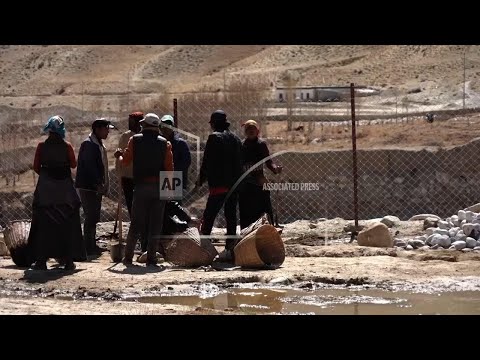(1 Jul 2025)
RESTRICTION SUMMARY:
ASSOCIATED PRESS
Samjung, Nepal – 18 April 2025
1. Various of abandoned village
2. Various of parched fields
3. SOUNDBITE (Nepali) Kunga Gurung, farmer:
"We were local residents there. We moved here because there was no water to irrigate our fields. We need water to drink and for farming but there’s no water there. There were three canals, all three have dried up.”
4. Various of Kunga moving dirt
ASSOCIATED PRESS
Exeter, UK – 7 May 2025
++ZOOM QUALITY++
5. SOUNDBITE (English) Neil Adger, professor of human geography at the University of Exeter:
"On an everyday basis, the changing weather patterns is actually affecting the ability of people to live in, you know, particular places because of the impacts of floods, because of the impact of droughts, which basically affects the bottom line, the productivity and the profitability of farming and other sorts of livelihoods."
ASSOCIATED PRESS
Samjung, Nepal – 18 April 2025
6. Kunga moving dirt
7. Various of villagers gathering and digging up irrigation canals
STORYLINE:
The Himalayan village of Samjung has vanished — emptied by climate change.
Perched in a wind-carved valley in Nepal’s Upper Mustang, over 13,000 feet (3,962 meters) above sea level, the Buddhist village once lived by slow, deliberate rhythms — herding yaks and sheep and harvesting barley under cliffs honeycombed with “sky caves” — 2,000-year-old chambers used for ancestral burials, meditation and shelter.
Then the water dried up.
The snowy mountains turned brown and barren. Year after year, snowfall declined. Springs and canals vanished and when it did rain, the water came all at once, flooding fields and washing away the mud homes. Families left one by one, leaving the skeletal remains of a community transformed by climate change: Crumbling mud homes, cracked terraces and unkempt shrines.
The Hindu Kush and Himalayan mountain regions — stretching from Afghanistan to Myanmar — hold more ice than anywhere else outside the Arctic and Antarctic. Their glaciers feed major rivers that support 240 million people in the mountains — and 1.65 billion more downstream.
Such high-altitude areas are warming faster than lowlands. Glaciers are retreating and permafrost areas are thawing as snowfall becomes scarcer and more erratic, according to the Kathmandu-based International Centre for Integrated Mountain Development or ICMOD.
Kunga Gurung is among many in the high Himalayas already living through the irreversible effects of climate change.
"We moved here because there was no water to irrigate our fields. We need water to drink and for farming but there’s no water there. There were three canals, all three have dried up," said Gurung, 54.
Climate change is reshaping where people can live and work by disrupting farming, water access and weather patterns, said Neil Adger, a professor of human geography at the University of Exeter.
In places like Mustang, that’s making life harder, even if people don’t always say climate change is why they moved.
“On the everyday basis, the changing weather patterns … it’s actually affecting the ability of people to live in particular places,” Adger said.
Around the globe, extreme weather due to climate change is forcing communities to move, whether it’s powerful tropical storms in the Philippines and Honduras, drought in Somalia or forest fires in California.
The sisters Pemba and Toshi are grateful not to have to spend hours fetching water every day. But they miss their old home.
AP video shot by Dake Kang
Find out more about AP Archive: http://www.aparchive.com/HowWeWork
Twitter: https://twitter.com/AP_Archive
Facebook: https://www.facebook.com/APArchives
Instagram: https://www.instagram.com/APNews/
You can license this story through AP Archive: http://www.aparchive.com/metadata/youtube/2a2d5f5d45e34633a75e12f66909c621
Author: AP Archive
Go to Source
News post in July 6, 2025, 3:05 am.
Visit Our Sponsor’s:
News Post In – News





